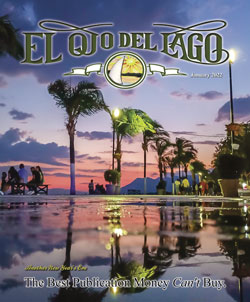President Jimmy Carter: A Portrait in Greatness
By Dr. Lorin Swinehart

Speaking of the extinction of species in an anthropocene world, Harvard biologist E.O. Wilson recently observed, “For the first time in history a conviction has developed among those who can actually think more than a decade ahead that we are playing a global endgame,” and urges that half of the surface of the earth be set aside for nature.
The expansion of national parks and monuments, wilderness areas, and nature preserves and the establishment of wildlife corridors would go a long way toward fostering such a dream. Beginning with President Theodore Roosevelt, the United States has historically led the way in the field of conservation.
There are many yardsticks by which a US president may be considered great. Herding significant pieces of legislation through a recalcitrant Congress, bringing a protracted war to a successful conclusion or preventing a global catastrophe have all been used as measurements of greatness in the past. If one takes into account commitment to the biosphere, to renewable energy sources, the protection and expansion of natural areas, then President Jimmy Carter stands out as one of our greatest.
In the course of his single term as president, utilizing the Antiquities Act of 1906, Carter signed the Alaska National Interest Lands Conservation Act into law, establishing 104.3 million acres of our fiftieth state as national monuments, an area the size of the state of Minnesota. In the process, he proclaimed Denali National Park and Preserve, a 6,000,000-acre area with only a single road bisecting it. On December 2, 1980, he authorized the expansion of Glacier Bay National Monument by 523,000 acres, leading to the creation of Glacier Bay National Park and Preserve. This landmark action included ten national parks and preserves, two national monuments, nine wildlife refuges, two conservation areas and 25 wild and scenic rivers.
While environmental groups and many indigenous peoples supported President Carter’s initiative, he was hanged in effigy by some groups in Alaska and needed extra security whenever visiting the state, proving neither for the first nor for the last time that he is a better person than are his detractors.
His activism was not limited to Alaska. In 1978, he granted full wilderness status to the Boundary Waters canoe area of northern Minnesota and established the Pinelands National Reserve in New Jersey. Working closely with Congress, in the course of his all too brief tenure as president, he signed into law the Soil and Water Conservation Act, the Surface Mining Control and Reclamation Act, the Antarctic Conservation Act, the Endangered American Wilderness Act and the Superfund Act, and created the Department of Energy to promote clean, alternative fuels.
Carter’s labors on behalf of the environment did not end with his presidency. Even now, at the age of 90, he continues to publish book after book on subjects for which he has a passion: The tenets of the Christian religion; human rights, efforts to combat poverty and injustice, Middle Eastern peace, recollections of his rural southern boyhood, even a book of poetry entitled Always a Reckoning. In his 1989 book Outdoor Journal, he writes lovingly of fly fishing in such diverse settings as Japan and New Zealand, Camp David and his native Georgia, of being lost in a forest, meeting a rattlesnake, hunting for arrowheads, and the peace and joy to be found in the natural world.
Carter ordered 36 solar panels installed on the White House roof as an example to his countrymen, exhibiting greater prescience than his successor who regarded them as silly and, in a disgraceful scene, ordered the panels torn off, to the accompanying Orc-ish hoots and claps of a coterie of coal and petroleum executives. One of the panels now resides in the Carter Museum, while another is on exhibit at the entrance to China’s largest plant that manufactures solar panels.
I have often said that Carter, a fellow fly fisherman and the single US President who could successfully Eskimo roll a kayak, is one of the only two chief executives with whom I would eagerly share a wilderness campfire. In truth, Jimmy Carter is one of the few presidents since Theodore Roosevelt who would ever be found near a wilderness campfire.
The other would be President Obama, whose environmental record is on a par with President Carter’s. Obama has used the Antiquities Act 24 times to create national monuments, including Mojave Trails, Sand to Snow, Organ Mountains-Desert Peaks, Castle Mountains, Katahdin Woods and Waters and others. It is to be hoped that he will follow once more in President Carter’s footsteps and declare the 1.7 million acres surrounding Grand Canyon National Park the Greater Grand Canyon Heritage National Monument and establish the 2 million acre Bears Ears National Monument in Utah, fitting capstones to a great legacy.
Conservation is a fight that never ends. Perhaps other occupants of the Oval Office will exhibit the foresight and fortitude with regard to the environment that Carter and Obama have, as unlikely as that seems at the present.









